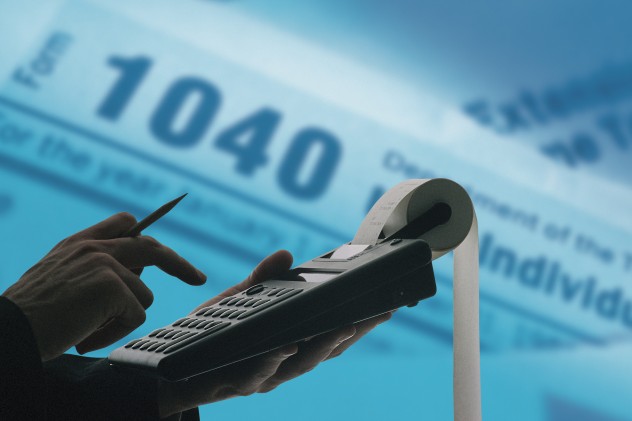 Our World
Our World  Our World
Our World  Movies and TV
Movies and TV 10 Times Twin Movies Competed with Each Other
 The Arts
The Arts 10 Masterpieces Plucked from the Artist’s Subconscious
 Crime
Crime 10 Fascinating Facts about Rikers Island
 Pop Culture
Pop Culture 10 Things You Might Not Know about Dracula
 Weird Stuff
Weird Stuff 10 Everyday Activities That Were Once Considered Illegal
 History
History Ten of History’s Hidden Secrets: Stories 99% Don’t Know About
 Movies and TV
Movies and TV 10 Actors Who Infamously Stormed Off Set While Filming
 Food
Food 10 Foods That Have Alleged Occult Powers
 Sport
Sport 10 Lesser-Known Multi-Sport Alternatives to the Olympics
 Our World
Our World Planet Earth’s 10 Most Hardcore Natural Creations
 Movies and TV
Movies and TV 10 Times Twin Movies Competed with Each Other
 The Arts
The Arts 10 Masterpieces Plucked from the Artist’s Subconscious
Who's Behind Listverse?

Jamie Frater
Head Editor
Jamie founded Listverse due to an insatiable desire to share fascinating, obscure, and bizarre facts. He has been a guest speaker on numerous national radio and television stations and is a five time published author.
More About Us Crime
Crime 10 Fascinating Facts about Rikers Island
 Pop Culture
Pop Culture 10 Things You Might Not Know about Dracula
 Weird Stuff
Weird Stuff 10 Everyday Activities That Were Once Considered Illegal
 History
History Ten of History’s Hidden Secrets: Stories 99% Don’t Know About
 Movies and TV
Movies and TV 10 Actors Who Infamously Stormed Off Set While Filming
 Food
Food 10 Foods That Have Alleged Occult Powers
 Sport
Sport 10 Lesser-Known Multi-Sport Alternatives to the Olympics
10 Facts About Life After The Apocalypse
The end is nigh, or so that crazy-looking guy in the sandwich board keeps saying. Luckily then, we’ve got some time to prepare for what life is going to be after the great cataclysm. So let’s do our best to familiarize ourselves with the things we might not expect.
10 You’ll Still Be Paying Taxes (If You’re Rich)

The IRS might be many things (all of which, incidentally, are inappropriate for printing), but we can’t fault them on their determination. After all, they’ve drawn up a plan to continue collecting taxes in the aftermath of a nuclear attack. According to the IRS’s manual, they expect to resume collecting duties within 30 days of a nuclear attack. Fortunately, they’ll only be focusing on “collecting the taxes which will produce the greater revenue yield.” So, that’s the one percent then. Honestly, someone show this to a member of the Occupy Movement, and they’ll sleep soundly in their bed that night.
9 We’ll Use Carrier Pigeons

It feels like a common sense thing to say, but along with the collapse of society, the loss of power, and the lawlessness that will inevitably accompany the end of the world, your chances of using email, telephone, or Facebook to communicate will be practically zilch. Luckily, China has the answer—the carrier pigeon. According to reports, the People’s Liberation Army recently trained a “pigeon army” to carry messages between military and political facilities should there be a major collapse in the country’s communication network.
8 We’ll Have WWE Matches To Entertain Us

Over the past few decades, the WWE (World Wrestling Entertainment) has amassed over 125,000 tapes of wrestling matches. This stuff is history; after all, future generations need to know precisely what Hulkamania is. To ensure this legacy remains undamaged by any future cataclysms, the WWE stores just under half of this collection (60,000 assets) in a nuclear-proof bunker in the Catskill Mountains of New York State. So when the apocalypse comes knocking, we may have hardships to face, but doing without roid-raged meatheads pile driving each other through tables won’t be among them.
7 Bacteria Data Storage

No matter what apocalyptic disaster comes our way, we can be sure about one thing: All of our current methods of storing important data are going to be useless. After all, electronically-stored data is susceptible to electromagnetic pulses (EMPs), flooding, fire, power outages, and the age-old “having a building collapse on top of the server.”
With this in mind, a group of scientists have discovered a way to store data within the genomes of bacteria, namely the lyrics to “It’s a Small World After All.” They did this by translating the song into a code based on the four letters that comprise DNA—A, G, T, and C—and manufacturing this code into artificial DNA, which was then inserted into bacteria such as E. coli. When the bacteria reproduced, the message was passed on through each generation, rendering it near-immortal. Even better, some types of bacteria can survive extreme conditions such as those that you’d find in a post-apocalyptic wilderness.
6 We Won’t Be Able To Scavenge For Fuel

One of the most popular images of the post-apocalypse—thanks to movies like Mad Max—is that fuel will become a new currency. Forget money, gold, and diamonds: After mega-smallpox comes to town, you’d better have some gasoline to barter with, or you’re going hungry.
Or maybe not. The thing about ethanol-based fuels like gasoline is that they have an expiration date. Ethanol is a hygroscopic chemical, meaning that it will attract and absorb water; however, putting as much as even one tablespoon of water into fuel will contaminate it and render it useless. Over time, the fuel will attract naturally occurring water. Guidance suggests that after you’ve put it into your car, it should be used within a month. Even when stored within airtight drums, it’ll only last for six months. So what does this mean for us? Well, when we need fuel, we won’t be able to get any by scavenging it from abandoned cars (unless they were only abandoned recently). We can’t stockpile it either because no matter what we do, it’s going to expire.
“But, what about the refineries?” we hear you ask. The simple answer is: “What refineries?” Any incident that’s capable of causing the collapse of human civilization isn’t going to leave facilities like that in an operational state. If the refineries themselves aren’t destroyed, the workforce will be either killed off or pretty reluctant to venture out of their bunkers.
5 We’ll Be Drinking Beer And Soda

In 1955, under the auspices of “Operation Teapot,” the US government decided to test the effect of a nuclear explosion on “commercially packaged beverages.” Essentially, they dropped an atomic bomb on cans and bottles of soda and beer, all in the name of checking whether we’d still be able to get our drink on in the midst of nuclear winter.
The results? Good, actually. Both the soda and beer were deemed to be of acceptable quality (although, depending on their proximity to the bomb, there might be a slight change in flavor), leaving the scientists to conclude that these drinks could easily serve as vital water sources.
4 We’ll Need Our Giant Seed Bank

In the farthest depths of the Arctic Archipelago (pretty close to the North Pole), lies the Svalbard Global Seed Vault. Built by Norway for the bargain price of $9 million, it’s exactly what you’d imagine a supervillain’s HQ would look like—if that supervillain happened to have a huge obsession with crop preservation. The complex—built to withstand nearly anything—is built 120 meters (about 400 ft) into a mountain, has a fully automated security system, and even a scanner to detect bombs potentially hidden in seed shipments.
Inside, there’s over 770,000 different seed samples, stored in temperatures of -18 Celsius (about 0° F). The purpose of all this is to provide long-term storage for seeds, so in the event of a global disaster, we have a ready supply of seeds to rebuild agriculture.
3 3-D Printed Food Made Of Mealworms

Until those seeds can mature, we’ll have to find alternate means of feeding ourselves. For this, enter the Dutch Organization for Applied Scientific Research. They’re currently exploring the applications for 3-D food printing, using base materials which include algae, insects, and mealworms.
At the moment, their research is still in its earliest stages; however, they’ve successfully made a 3-D-printed shortbread cookie from milled mealworms. Of course, this work isn’t being carried out for post-apocalyptic reasons—in fact, they’re looking at 3-D printing as a way of feeding astronauts a varied diet—but it’s easy to see the applications for life after the end.
2 LAGEOS-1 Will Tell Us What Year It Is

LAGEOS-1, also known as Laser Geodynamics Satellite-1, is a spherical satellite currently orbiting the Earth. At present, it’s tasked with helping to record information about tectonic plate movements (as well as the shape of the planet) by acting as a reflector for Earth-transmitted laser beams. If you’re wondering, yes, that’s why it looks like a pimped-out golf ball.
But it has another mission. Thanks to Carl Sagan, the inside of LAGEOS-1 contains a plaque depicting Earth at three different points in time: 268 million years ago (when the continents were all one huge mass), the present day (when the satellite launched in 1976), and 8.4 million years from now. As a result, whoever finds the LAGEOS plaque when it lands back on Earth will be able to roughly establish the date by comparing a map of their Earth against the second and third LAGEOS maps.
1 The Hornsleth Deep Storage Project

This summer, artist Kristian von Hornsleth is planning to drop what he calls a “DNA encapsulation sculpture” into the Mariana Trench. That’s a fancy way of saying “a sculpture filled with samples of human DNA.”
Measuring eight meters by eight meters (26 ft by 26 ft), this star-shaped sculpture is going to be packed with samples of human blood and hair taken from over 5,000 people from all over the world, sealed, and then dropped into the deepest part of ocean in the world. As well as being a piece of art, the purpose of this is simple: to preserve the human genome somewhere safe (Cthulhu notwithstanding).
The surface of the sculpture is made from electropolished stainless steel, which will prevent rust from corroding and destroying it. It also has a special nano-engineered outer coating to prevent plants and other organic matter from growing on it, ensuring that it’ll remain as shiny as the day it gets dropped in the ocean, which will certainly help our efforts to find it in a century after the invasion of the veloci-honey badgers.
For more from Adam, you can check out his website or follow him on Twitter.








